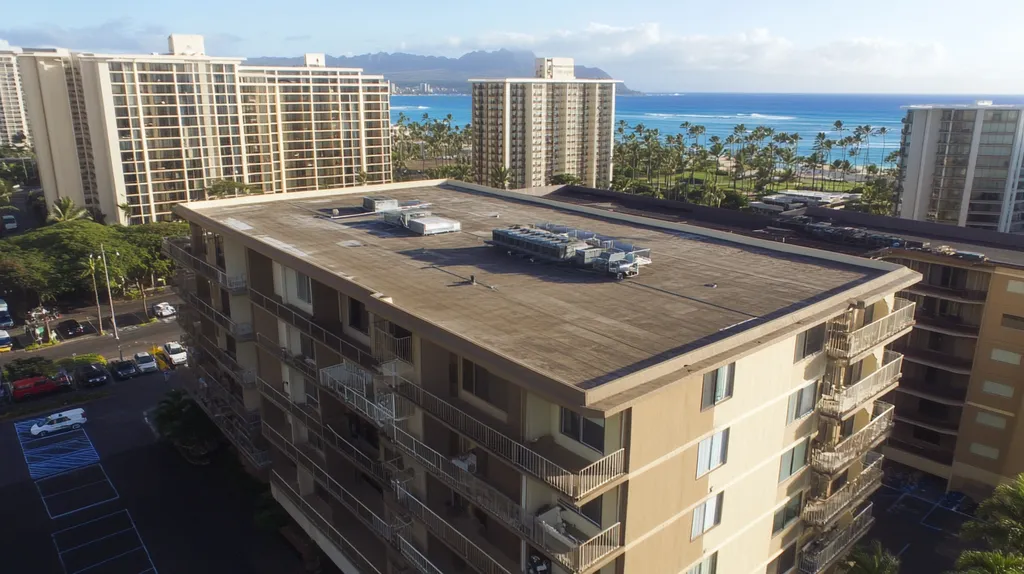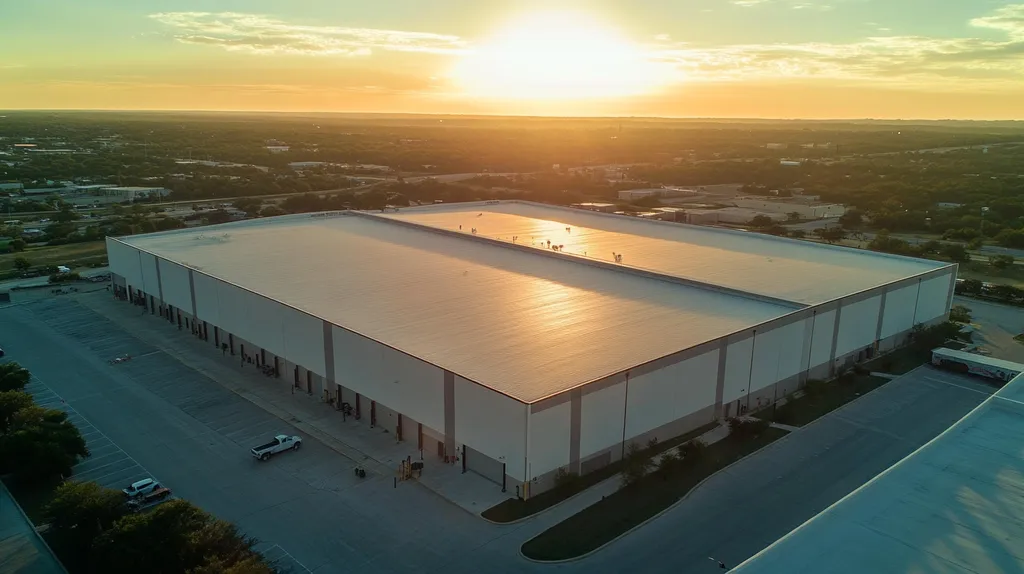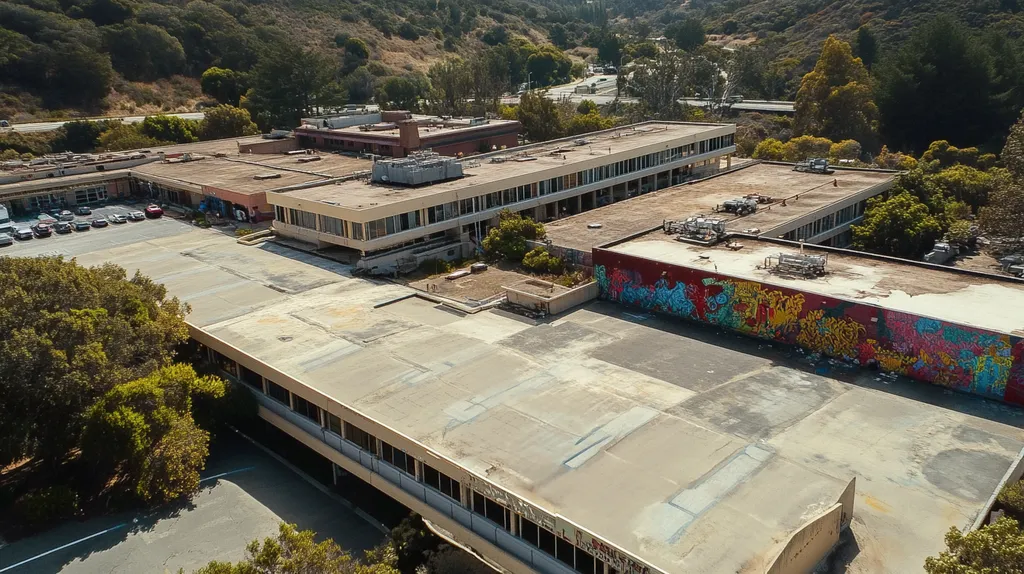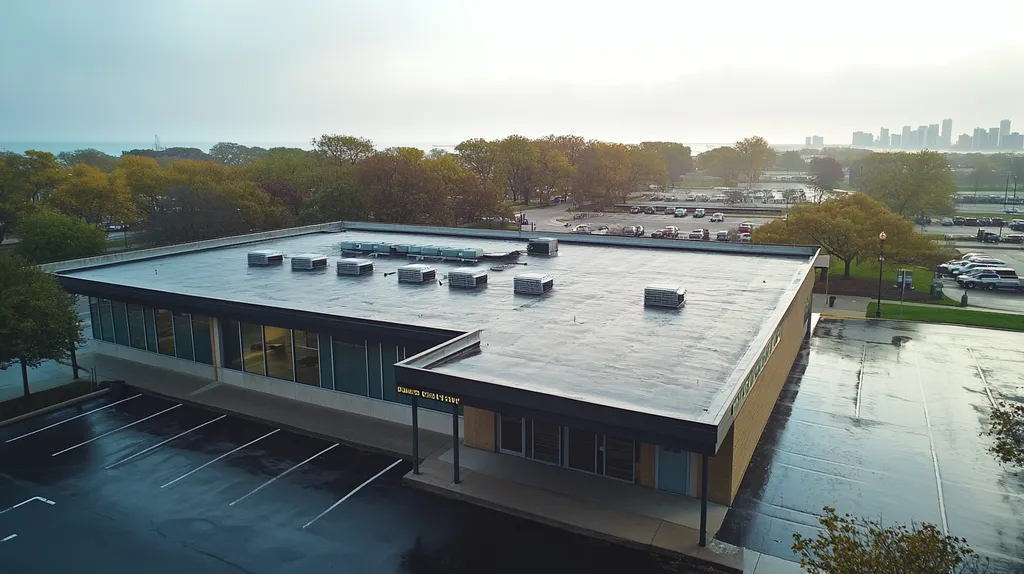Every year, thousands of workplace accidents occur due to improper roof access on industrial facilities, resulting in serious injuries and millions in damages. For facility managers, controlling who accesses the roof – and how they do it – has become a critical safety and liability concern.
From contractors servicing HVAC systems to maintenance crews performing repairs, industrial roofs see constant traffic that must be carefully managed through systematic protocols and clear safety guidelines.
This comprehensive guide examines the essential elements of roof access management, breaking down complex requirements into actionable steps that protect both workers and facilities.
SECTION 1: THE BASICS EXPLAINED
Industrial roof access presents significant safety and operational challenges for facility managers. Each year, thousands of workplace accidents occur due to improper roof access management, resulting in injuries, equipment damage, and costly operational disruptions. A structured approach to controlling and monitoring roof access is essential for protecting both workers and valuable building assets.
What It Is (In Plain Language)
Access management is a systematic approach to controlling who can access industrial roofs, when they can access them, and how they must do so safely. It establishes clear protocols for every aspect of roof entry, movement, and exit.
A comprehensive access management system includes designated entry points, marked pathways, and specific procedures for different types of work. It defines which areas are restricted and which equipment is required for safe access.
The system also encompasses documentation requirements, including work permits, safety checklists, and communication protocols. This paperwork ensures accountability and creates a record of all roof activities.
“No rule is going to be enforceable if anybody can access the roof at any time. Having a permitting process allows you to ensure your rules are followed, allows you to ensure that somebody is on the receiving end of those check-ins, and allows you to do what’s necessary to make a roof safe for access.” (source: Simplified Safety)
Why It Matters (To Your Building)
Proper access management directly impacts workplace safety and operational efficiency. Without clear protocols, workers may take unnecessary risks or access areas they’re not qualified to handle.
The financial implications of poor access management are significant. Worker injuries, equipment damage, and emergency repairs caused by improper access can result in substantial costs and liability issues.
Building integrity also depends on controlled access. Unrestricted roof traffic can damage protective membranes, create punctures, and compromise weatherproofing systems.
Regular access management helps identify potential issues before they become major problems, extending roof life and protecting your facility investment.
How It Works
Access management begins with a detailed assessment of your facility’s roof areas, identifying hazards, access points, and work zones. This information forms the foundation for developing specific access protocols.
The system requires proper documentation, including permits, maintenance schedules, and safety procedures. Each access point must be clearly marked, and pathways must be designated for different types of work.
Regular training ensures all workers understand and follow access protocols. This includes proper use of safety equipment, emergency procedures, and communication requirements.
Continuous monitoring and updates keep the system current with changing facility needs and safety regulations. Regular inspections verify compliance and identify areas for improvement.
SECTION 2: PRACTICAL APPLICATIONS
Industrial roof access management directly impacts worker safety and operational efficiency. Each year, thousands of preventable accidents occur due to inadequate access controls and safety protocols. The financial implications are substantial – from workers’ compensation claims to equipment damage and production delays. Understanding and implementing proper access management systems is crucial for protecting both personnel and facility assets.
Common Uses & Examples
Modern access management systems incorporate multiple safety elements working in concert. Fixed ladders with cages, roof hatches with guardrails, and designated walkway systems create a comprehensive safety network.
Regular maintenance activities benefit significantly from well-designed access systems. HVAC servicing, solar panel cleaning, and drainage inspection all require frequent, safe roof access.
Emergency response scenarios demonstrate the critical nature of proper access management. Clear pathways and marked access points enable rapid response during equipment failures or weather events.
Cross-functional teams need varying levels of roof access throughout the year. A structured system ensures each group can safely access their work areas while avoiding restricted zones.
When You Need It Most
Peak maintenance periods demand rigorous access control. Multiple contractors working simultaneously require careful coordination to prevent accidents and maintain efficiency.
Severe weather events necessitate immediate roof access for damage assessment and emergency repairs. Pre-established access protocols become crucial during these high-pressure situations.
Major equipment installations or removals present unique access challenges. These projects often require temporary modifications to standard access routes while maintaining safety standards.
Supervisors must review Roof Safety Plans before allowing access, particularly when work requires equipment shutdowns or involves EMF hazards. (source: University of Michigan Environment, Health & Safety)
Interactions With Other Systems
Access management integrates closely with building security systems. Electronic access controls and monitoring equipment must work seamlessly with physical barriers and safety equipment.
HVAC systems require particular consideration in access planning. Service points must remain accessible while protecting sensitive components from unauthorized contact.
Fall protection systems interface directly with access management infrastructure. Anchor points, lifelines, and guardrails must align with designated access routes and work zones.
Emergency systems depend on proper access management. Fire suppression equipment, emergency exits, and rescue access points must remain clear and easily identifiable at all times.
SECTION 3: KEY TERMINOLOGY DECODED
Clear understanding of roofing terminology directly impacts worker safety and project success. Each year, misunderstandings of technical terms and measurements contribute to workplace accidents, project delays, and costly repairs. Proper interpretation of industry-specific language ensures that safety protocols are correctly followed and maintenance procedures are properly executed.
Essential Terms Explained
Access control terminology forms the foundation of roof safety protocols. Terms like “designated entry points” and “restricted zones” define where workers can safely enter, exit, and operate on the roof surface.
Fall protection vocabulary includes critical terms such as “anchor points,” “lifelines,” and “guardrail systems.” These components work together to create a comprehensive safety network that prevents accidents during routine maintenance and repairs.
Load ratings and capacity limits describe the structural capabilities of different roof areas. Understanding terms like “point load” and “distributed weight” helps prevent overloading that could compromise roof integrity.
Emergency response terminology includes “muster points,” “evacuation routes,” and “rescue protocols.” Clear understanding of these terms ensures rapid, coordinated responses during critical situations.
Industry Jargon Translated
“Tie-off points” refer to engineered anchor points where workers must secure their fall protection equipment. These points undergo regular inspection to maintain their safety rating.
“Walking pads” and “walkway systems” describe designated paths that protect both workers and roof membranes. These systems typically include slip-resistant surfaces and high-visibility markings.
Supervisors must review “Roof Safety Plans” before allowing access, particularly when work requires equipment shutdowns or involves EMF hazards. (source: University of Michigan Environment, Health & Safety)
“Dead loads” and “live loads” describe permanent and temporary weight distributions on the roof. Understanding these terms helps facility managers plan equipment placement and maintenance activities.
Measurement & Units Simplified
Roof slope measurements use ratios like “4:12” or percentages to indicate steepness. This information determines appropriate safety equipment and access restrictions for different areas.
Distance measurements for safety zones typically use feet or meters. Clear understanding ensures proper spacing between workers, equipment, and roof edges.
Weight capacity measurements include both “point loads” measured in pounds per square foot and “total loads” measured in tons. These measurements guide equipment placement and worker distribution.
Time measurements for safety protocols include inspection intervals and maximum exposure limits. These durations help manage worker fatigue and ensure regular system maintenance.
SECTION 4: DECISION FACTORS
Managing industrial roof access requires careful evaluation of multiple interrelated factors. Poor decisions about access systems can result in workplace injuries, equipment damage, and costly regulatory violations. Each year, facilities face increasing pressure to upgrade aging access infrastructure while balancing budget constraints and operational demands. Understanding key decision factors helps owners and managers implement effective, compliant solutions that protect both workers and assets.
Cost Considerations
Initial installation costs vary significantly based on roof configuration and access requirements. Basic ladder systems may cost a few thousand dollars, while comprehensive access solutions with multiple entry points can exceed $50,000.
Ongoing maintenance represents a substantial portion of total ownership costs. Regular inspections, repairs, and component replacements must be factored into annual budgets to maintain system safety and compliance.
Training expenses include both initial certification and periodic updates for staff. These costs increase with workforce turnover and evolving safety regulations.
Insurance premiums and potential liability exposure should influence budget planning. Well-designed access systems can reduce insurance costs and minimize legal risks.
Performance Trade-offs
Fixed ladders with cages, while common on many facilities, no longer meet updated safety standards. OSHA’s revised requirements mandate more robust fall protection solutions, giving building owners until November 2036 to upgrade their systems. (source: Buildings)
Portable access equipment offers flexibility but requires additional storage space and handling time. These systems must be regularly inspected for damage and properly secured during use.
Automated access controls enhance security but can complicate emergency response procedures. Backup systems and override protocols must be established to ensure reliable access.
Weather protection features may limit access points or increase installation complexity. Solutions must balance environmental protection with operational efficiency.
Lifespan & Durability Factors
Material selection directly impacts system longevity and maintenance requirements. Marine-grade aluminum and stainless steel components offer superior corrosion resistance but command premium prices.
Environmental exposure accelerates wear on access equipment. UV radiation, temperature extremes, and chemical exposure from roof operations can degrade components over time.
Usage patterns affect equipment durability. High-traffic access points require more robust construction and more frequent maintenance than occasionally used entries.
Modular designs facilitate component replacement and system upgrades. This approach helps extend overall system lifespan while maintaining compliance with evolving safety standards.
SECTION 5: COMMON CHALLENGES
Industrial roof access management faces increasingly complex challenges as facilities modernize and safety regulations evolve. According to industry data, over 60% of rooftop accidents stem from inadequate access controls and insufficient safety protocols. With aging infrastructure, multiple contractor teams, and heightened compliance requirements, facility managers must address these challenges systematically to protect workers and assets.
Frequent Problems & Solutions
No rule is going to be enforceable if anybody can access the roof at any time. Having a permitting process allows you to ensure your rules are followed, allows you to ensure that somebody is on the receiving end of those check-ins, and allows you to do what’s necessary to make a roof safe for access. (source: Simplified Safety)
Multiple contractor coordination presents significant challenges during peak maintenance periods. Implementing digital scheduling systems and mandatory pre-work briefings helps prevent scheduling conflicts and ensures all teams understand access restrictions.
Weather-related access issues frequently disrupt maintenance schedules and emergency repairs. Installing weather monitoring systems with automated alerts helps teams make informed decisions about roof access during uncertain conditions.
Equipment placement and staging often creates temporary access barriers that compromise safety protocols. Developing detailed work zone plans with designated staging areas maintains clear access routes while accommodating necessary equipment.
Warning Signs To Watch For
Deteriorating access infrastructure presents clear warning signs before critical failure. Visible rust, loose components, or excessive movement in ladders and walkways demands immediate assessment and repair.
Increasing frequency of safety violations often indicates systemic problems with access protocols. Tracking these incidents helps identify patterns and implement targeted improvements.
Worker complaints about access difficulties or safety concerns should trigger prompt investigation. These front-line observations often reveal developing issues before they become serious problems.
Missing or damaged safety signage compromises access control effectiveness. Regular signage audits ensure proper communication of hazards and protocols.
Preventative Approaches
Digital access logging systems provide real-time monitoring of roof activities. These systems help enforce compliance while creating detailed records for analysis and improvement.
Regular training updates keep workers current with evolving safety requirements and access procedures. Monthly safety meetings provide opportunities to address emerging challenges and reinforce proper protocols.
Preventive maintenance schedules for access equipment reduce unexpected failures and downtime. Comprehensive inspection checklists ensure all components receive appropriate attention.
Cross-training multiple employees on access management procedures ensures continuity during staff changes. This redundancy maintains consistent safety standards across all shifts and operations.
SECTION 6: NEXT STEPS & RESOURCES
Implementing effective roof access management requires careful planning and reliable resources. Each year, thousands of preventable accidents occur due to inadequate preparation and outdated safety protocols. Without proper guidance, facility managers risk costly injuries, equipment damage, and regulatory violations. Understanding available resources and taking systematic steps toward implementation can dramatically improve safety outcomes while protecting valuable assets.
Questions To Ask Providers
Before selecting an access management provider, verify their experience with similar industrial facilities. Request detailed case studies and references from comparable projects to evaluate their expertise level.
Ask about their specific approach to fall protection and access control. Providers should demonstrate thorough knowledge of current safety standards and explain how their solutions exceed minimum requirements.
Investigate their training programs and certification processes. Quality providers maintain comprehensive training records and regularly update their protocols to reflect evolving safety standards.
Discuss their emergency response capabilities and rescue protocols. Ensure they have proper equipment and procedures in place for rapid response to potential incidents.
Industry Standards & Guidelines
OSHA’s revised requirements no longer recognize the old ladder cages as safe options, giving building owners until November 2036 to upgrade their systems with modern fall protection solutions. (source: Buildings)
Access management systems must comply with multiple regulatory frameworks. Regular audits help ensure continued alignment with evolving safety requirements.
Industry associations provide valuable guidelines beyond basic compliance. These resources often address specific challenges unique to different facility types.
Documentation requirements continue to expand as safety standards evolve. Maintaining detailed records of inspections, training, and incidents helps demonstrate due diligence.
Further Learning Simplified
Professional certification programs offer structured learning paths for facility managers. These programs typically cover both theoretical knowledge and practical applications.
Online training platforms provide flexible access to current safety information. Many offer interactive modules specifically focused on industrial roof access management.
Industry conferences and workshops facilitate direct learning from experienced professionals. These events often showcase new technologies and innovative safety solutions.
Technical publications regularly update best practices and emerging trends. Subscribing to respected industry journals helps maintain awareness of evolving safety standards.
The Bottom Line
With over 1,000 serious workplace injuries occurring annually due to improper roof access, the stakes for implementing proper management systems have never been higher.
Modern industrial facilities face increasing complexity in roof access challenges, from coordinating multiple contractor teams to maintaining compliance with evolving safety standards.
Success requires a systematic approach that combines clear protocols, proper training, and regular system maintenance.
Facility managers who invest in comprehensive access management solutions protect not only their workers but also their operational continuity and financial stability.
The time to evaluate and upgrade existing access systems is now, before incidents occur that could result in devastating human and financial costs.
FREQUENTLY ASKED QUESTIONS
Q. What is access management for a commercial roof?
A. Access management is a systematic approach to controlling roof entry, ensuring safety and compliance. It defines protocols for workers to safely enter and operate on roofs while protecting building assets.
Q. How does access management affect an industrial roof’s safety?
A. Effective access management improves workplace safety by minimizing risks during operations on industrial roofs. Clear protocols prevent unauthorized access, reducing the chances of accidents or injuries.
Q. What are common terms related to industrial roof access?
A. Familiar terms include “designated entry points,” “restricted zones,” and “fall protection.” Understanding these helps ensure proper safety protocols are followed while working on roofs.
Q. What are the costs involved in managing a commercial roof’s access?
A. Costs include installation, maintenance, and training to ensure safety compliance for commercial roofs. Budgeting for these aspects is crucial for maintaining an effective access management system.
Q. What challenges do facilities face in access management systems?
A. Common challenges include coordinating multiple contractors, managing unexpected weather, and maintaining infrastructure. Addressing these proactively reduces risks and ensures efficient operations.
Q. How can facility managers improve their access management approach?
A. Managers can implement digital logging systems and conduct regular training updates. These practices enhance safety compliance and help identify areas needing improvement.
Q. What additional resources are available for access management?
A. Access management providers offer training programs, case studies, and updated guidelines. Engaging with professional associations and attending industry conferences also provides valuable insights.











